Check out some books by your tutor Fiona Veitch Smith … (click on the book covers to find out more)
 In this seventh installment of my creative writing course, poet Andrew Philip introduces us to the basics of how to write poems. Andrew has been part of Edinburgh’s Shore Poets since 2002. His poetry volume Tonguefire was published by HappenStance Press in 2005. He is now working on his first anthology. His poetry blog can be found at http://tonguefire.blogspot.com.
In this seventh installment of my creative writing course, poet Andrew Philip introduces us to the basics of how to write poems. Andrew has been part of Edinburgh’s Shore Poets since 2002. His poetry volume Tonguefire was published by HappenStance Press in 2005. He is now working on his first anthology. His poetry blog can be found at http://tonguefire.blogspot.com.
The previous instalments of this course have focused on fiction, though much of the advice is also relevant to poetry. In the session on writing characters, Fiona asked whether you start stories off with character, plot or message. For poets, a question like that is irrelevant because poetry is about paying close attention to the language itself. As Don Paterson explains:
Almost invariably, poems arrive in the form of words, not ideas. I don’t think poets get ideas for poems, they get words; that’s their gift.
Of course, that gift can co-exist with a gift for fiction. And it can lie dormant in a writer who hasn’t realised it’s there. In this session, we’ll consider four basic elements of the poetry writing craft:

Lyric and Narrative Poetry
There are two basic modes of poetry: lyric and narrative. Roughly speaking, lyric poetry expresses the poet’s thoughts and feelings; while narrative poetry, of course, tells a story. The two are not mutually exclusive. They can mingle in a single poem, but the poem will usually lean more one way than the other.
Some writers prefer either the lyric or the narrative mode; some work equally well in both. Don’t assume that, just because you’re a fiction writer, you wouldn’t make a good lyric poet. For instance, John Burnside is respected as a novelist as well as a poet; and, although Margaret Atwood is best known for her novels, her poetry is also highly regarded.
Exercise 28:
Go back to the poem you wrote for exercise 3 in Session 1, Releasing Your Creativity. Is it primarily lyric or narrative? Think about which of those two modes of poetry you most enjoy reading. Is your poem in that mode? Try reworking the material into a lyric poem if it’s predominantly narrative or into narrative if it’s predominantly lyric.
Form
The other basic divide in poetry is between formal and free verse. Formal poetry uses traditional verse forms for which the meter, stanza shapes and rhyme schemes have been laid down. Many poets play about with these. Remember: not all formal poetry rhymes and just because something rhymes doesn’t mean it’s in a traditional form.
Free verse is what it says on the tin: it doesn’t follow a pattern set down by tradition but finds its own structure poem by poem. Free verse doesn’t tend to rhyme, but it can. Remember: just because something is free verse doesn’t mean it has no form.
The trick is to find the right form for your poem, whether traditional or free. Bear in mind that one of the lynchpins of form is repetition. Rhyme is the repetition of certain groups of sounds. Meter is the repetition of particular rhythms. You can repeat sentence structures, turns of phrase, images, words … anything that goes to make up the poem. Of course, if form was all repetition, it would get boring pretty quickly. So never forget the need for variation.
Exercise 29:
Write a 12-line poem with a refrain line but no rhyme. The refrain should appear as every third line. When it appears for the last time, change it to give the poem an unexpected twist. You can add, remove, reorder or replace words. You can also turn it into a question if it started off as a statement or split it into (parts of) more than sentence.
A Little More on Rhythm and Meter
One of the dangers for any beginner poet is getting stuck in a rhythm you like and know you can write effectively, so it’s worth thinking about rhythm and meter a bit more.
Traditional meter is divided into feet. A foot consists of a certain number of stressed and unstressed syllables, also known as stresses and slacks. I’ll not go through all the different kinds of feet here, but they’re worth learning about. The most common in English is the iambic pentameter: a line of five feet that each consist of a slack followed by a stress. This one is taken from Simon Armitage’s ‘Poem’:
And every week he tipped up half his wage.
Of course, it’s rare to find a successful poem in iambics that doesn’t vary the strict pattern at some point: leaving out or adding a stress or slack, turning the stress and slack round here or there, putting a pause somewhere in a line.
Two less traditional ways of structuring your line are accentual verse and syllabics. Whereas strict meter is based on counting stresses and slacks syllables, in accentual verse you count only the number of stresses. In syllabics, you simply count the number of syllables and let the stresses fall where they will.
Here are two tips for preventing yourself from falling into a predictable rhythm:
- vary the length of the lines in your poem
- use a line with an odd number of syllables
The tanka is a nice little Japanese form that can help you practise both tips. It has five lines: five syllables; seven syllables; five syllables; and seven syllables each in the last two lines. It’s very like its shorter cousin, the haiku – no abstract imagery and, traditionally at least, some reference to nature – but the two extra lines give you more scope.
Exercise 30:
Write three tanka: one about an urban landscape you know well, one about the sea and one about a landscape you’ve never seen. I’m allowing you a maximum of two adjectives per tanka and no abstract words at all. Stick to fairly short words.
Line Breaks
The line is the focus of tension and release in poetry, and poets have all kinds of fun with line breaks. By breaking the line at a specific point, you emphasise the words at the very end and the very start of a line. As a rule, try not to break your line after a weak word like ‘and’ unless you’re looking for a very specific effect.
The length of your line and where you break it are also crucial to the poem’s rhythm. Long lines tend to sound freer and prosier; short lines tend to sound more rhythmic. Lines that break at the end of a sentence (end-stopped lines) make the reader pause and hold that thought. Breaks that come in the middle of a sentence or clause drive the pace onward.
Exercise 31:
Below is Edwin Morgan’s poem ‘One Cigarette’ with all the line breaks taken out. Put them back in where you feel they should go. The lines are irregular in length and there’s only one stanza.No smoke without you, my fire. After you left, your cigarette glowed on in my ashtray and sent up a long thread of such quiet grey I smiled to wonder who would believe its signal of so much love. One cigarette in the non-smoker’s tray. As the last spire trembles up, a sudden draught blows it winding into my face. Is it smell, is it taste? You are here again, and I am drunk on your tobacco lips. Out with the light. Let the smoke lie back in the dark. Till I hear the very ash sigh down among the flowers of brass I’ll breathe, and long past midnight, your last kiss.
After you’ve put your line breaks back in, look at the published poem. What differences and similarities are there between your version and Morgan’s? What different effects do they produce? Why do you think Morgan made the choices he did?
Further resources
 You can find some good advice and further exercises in Donny O’Rourke’s ‘Beginning to Write’ worksheet for the Scottish Poetry Library‘s poetry ideas box. Or Peter Sansom’s Writing Poems. There’s simply no substitute for reading widely in poetry. You can start with anthologies, such as:
You can find some good advice and further exercises in Donny O’Rourke’s ‘Beginning to Write’ worksheet for the Scottish Poetry Library‘s poetry ideas box. Or Peter Sansom’s Writing Poems. There’s simply no substitute for reading widely in poetry. You can start with anthologies, such as:
- The Rattle Bag edited by Seamus Heaney and Ted Hughes
- Here to Eternity edited by Andrew Motion
But don’t stop at anthologies: when a poem catches your eye and ear, dig deeper and further into the poet’s work by reading their collections.
There’s also a lot of good audio on the internet. Check out the Poetry Archive for recordings of established poets, PoetCasting for a mix of established and new poets, or PennSound for readings and discussion by post-war American poets.
For more on free verse, read Fiona’s post on How Free is Free Verse? and for a discussion on the importance of sound, see Joan’s post Are You Listening Carefully?
In the next and final session of our online creative writing course we will be looking at competitions, markets and writing opportunities for your poetry and prose.
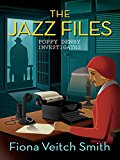

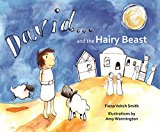
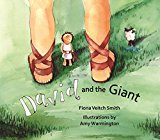
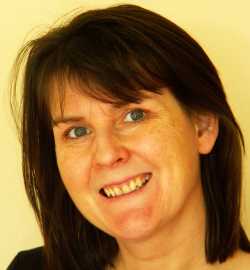 Welcome to The Crafty Writer's free online creative writing course, presented by Fiona Veitch Smith, a freelance journalist, editor, author, playwright, screenwriter and writing teacher. I hope that you'll see a dramatic improvement in the quality of your writing as you work through this course.
Welcome to The Crafty Writer's free online creative writing course, presented by Fiona Veitch Smith, a freelance journalist, editor, author, playwright, screenwriter and writing teacher. I hope that you'll see a dramatic improvement in the quality of your writing as you work through this course. 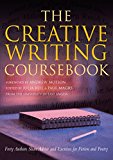
Hello,
I am intrigued with your course,especially since it appears that
you provide individual feedback. I am a beginning poet currently
taking a course in writing poetry which I enjoy but there is little
structure which you do well. I would like to register. How do I
do this?
Regards,
Bonnie Hamilton
Hi Barbara,
I do not give individual feedback. I don’t give any feedback on the course. The course is a self-study, self-contained entity. I do offer paid feedback however, apart from the course. For costs please see here http://www.thecraftywriter.com/services/#critiquing Regarding the course itself, there is no need to register. Please read the information on the contents page and the frequently asked questions tab, it will tell you all you need to know. Good luck!
Scarcity reality~
The elite community
puts us in poverty~
Equilibrium with no
equality~
Control the slaves of no prosperity~
Government crucified for helping the opressed~
A person is only valued for
his usefulness~
Countries that stand for equality get attacked, because they don’t conform to the beaurocrat~
Biting each other to survive even though we’re all going to die~
Canada proves health and education for all~
When will humpty dumpty forget about his wall~
Hierarchy is not beneficial for all~
Think of me ~
as one who helps the blind see~
Michelle Vedros M V
I would like to attend all your poetry related free classes
Hi Sophia, this is the only short session I have on poetry. The one that you have just read and sent this message from. There are plenty more poetry courses on the internet, I’m sure you’ll find one that suits you.
To me poetry is extremely complex, but your course showed me how creative one can be in writing poetry. Seems like it takes much more thought to convey emotion in such a brief form; it’s sort of like an emotional shorthand. I never really understood what constitutes poetry versus prose much before. Thanks!